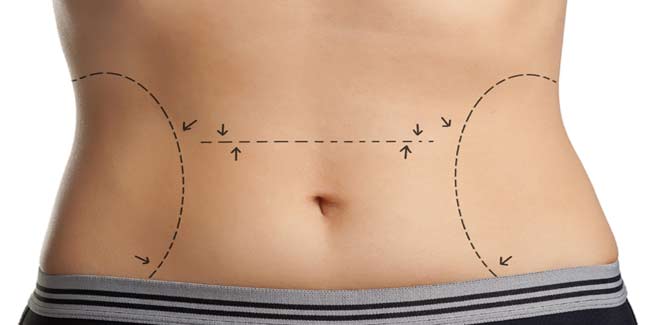
Losing a large amount of weight (40 kilos or more) as a result of weight loss surgery or through diet and exercise is a major accomplishment that will enhance your health, your confidence and your appearance.
Table of Content:-

Many people who achieve great weight loss can be left with large amounts of heavy, loose folds of skin around the abdomen, arms, thighs, breasts, buttocks and face. Skin can sag and lose elasticity as a result of being stretched for a long period of time. After significant weight loss, the skin often fails to shrink back to its former size and shape.
Excess skin can be a cosmetic issue
Excess skin can make getting dressed a difficult job, limit mobility, and cause hygiene and medical problems. Chronic skin- to-skin contact can result in rashes and infection. In addition, excess skin can be a cosmetic issue. People who have lost a large amount of weight often want their bodies to reflect the new, more positive image. Many times, the only way to remove excess skin left after extensive weight loss is through body-contouring plastic surgery.
For optimal results, body contouring should not be done for approximately 2 years following the start of any massive weight loss program. This time allows the skin to shrink as much as possible and your nutrition can be optimized. Skin reduction is done in stages to minimize complications such as infection and blood loss, and is often done over a period of years as one or two areas of the body are addressed at a time. Also, touch-up surgeries are often required later.
Areas of the body that are often treated
Following areas of the body are most often treated through body contouring after great weight loss- loose skin on abdomen, tummy tuck or abdominoplasty involves removing excess skin and tightening of the underlying abdominal muscles. An incision is made just above the pubic area from hip to hip. For tightening of thigh skin, medial thigh lift surgery is designed to remove excess skin from the upper thigh, involves an incision along the inner thigh starting at the groin and extending as far as the knee. For breasts, a number of procedures are available, including breast lift with or without augmentation (enlargement with implants) and breast reduction. In surgery to remove excess skin from the arm (brachioplasty), an incision is made starting at the armpit and extending to the elbow. Removing excess skin around the face or neck after weight loss is akin to a traditional facelift, except that more skin is removed.
A combination of surgeries may be done at the same time
A combination of surgeries may be done at the same time, as long as safety can be maintained. An "upper body lift" may include a combination of surgeries to the arms, back, and breasts/chest. A "lower body lift" may include combination surgeries to the hips, thighs, abdomen, and buttocks. The exact procedures to be performed at one time will be individualized by the plastic surgeon and patient. All surgeries are performed in the hospital under general anesthesia, and most patients stay in the hospital one to four nights. Most people can return to work after two to four weeks.
Liposuction may be used
Most body-contouring procedures involve making an incision in the least obvious part of the area to be trimmed, removing excess skin, and suturing the area with fine stitches to minimize scarring. With these types of procedures, scarring is unavoidable. Liposuction may be used in conjunction with some procedures. Because of the significant amount of skin to be removed during contouring surgery, there are greater associated risks than with standard cosmetic surgery which include bleeding, infection, separation of incision, skin laxity, and formation of a seroma, asymmetry and rarely deep vein thrombosis.
However, realistic expectations are a must. Surgery will lead to marked improvements in your shape, but it is impossible to restore the skin or body to what it would have been without the weight gain.
Dr K M Kapoor is Head of Dept of Cosmetic Surgery at Fortis Hospital, Mohali.
Read more articles on Beauty Treatments and Body Surgeries
How we keep this article up to date:
We work with experts and keep a close eye on the latest in health and wellness. Whenever there is a new research or helpful information, we update our articles with accurate and useful advice.
Current Version